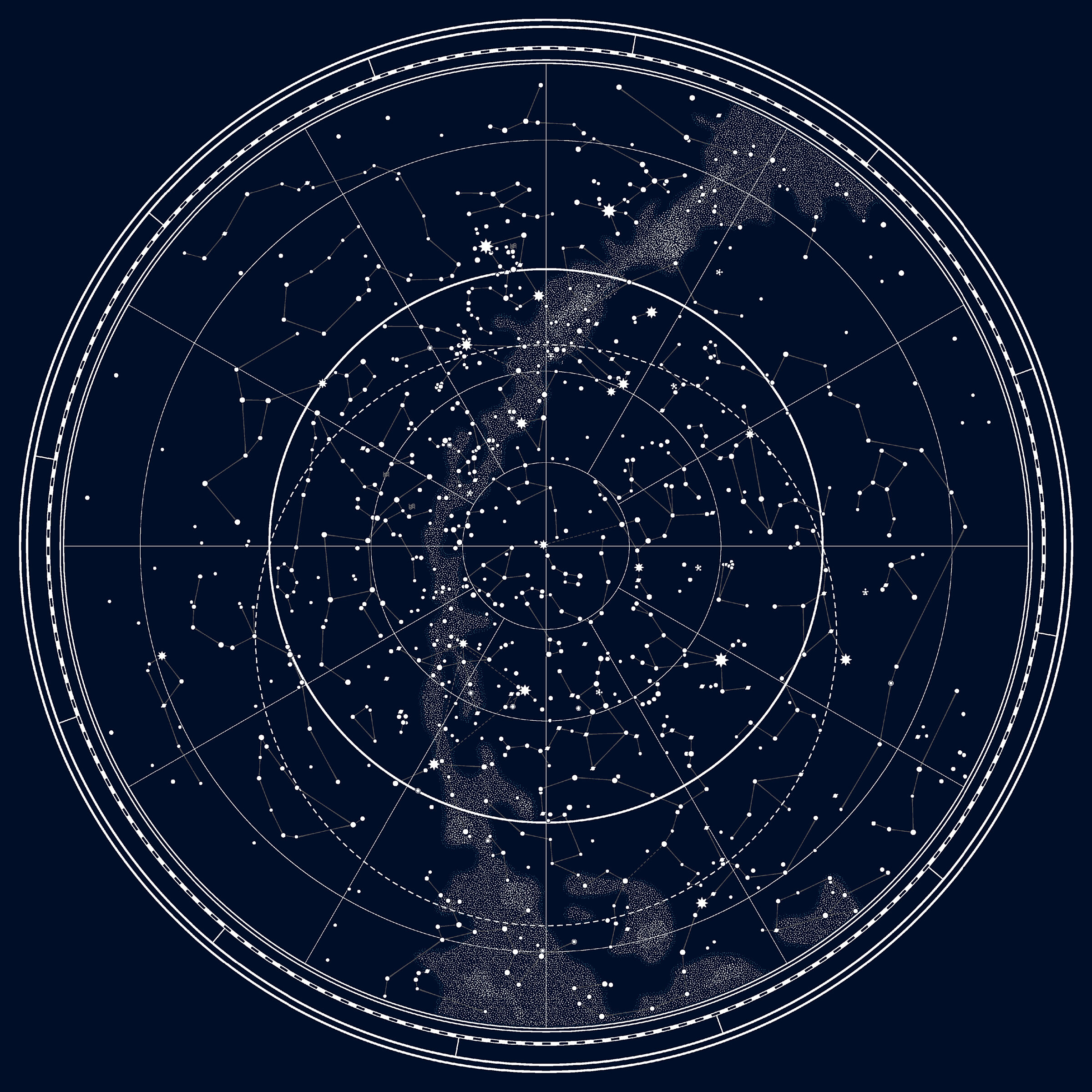Kate Howells • May 01, 2024
What is the difference between astronomy and astrology?
The terms “astronomy” and “astrology” are sometimes mixed up, but they actually mean very different things. While they both deal with planets and other celestial objects, astronomy is a scientific discipline, whereas astrology is a divinatory belief system.
Astronomy is the field of science that studies objects and phenomena in space. Astronomers apply physics, mathematics, and chemistry to explain the origins and behaviors of planets, moons, stars, nebulae, galaxies, and other celestial bodies, as well as the Universe as a whole.
Astrology, on the other hand, is a divinatory practice based on the belief that the movements and relative positions of celestial bodies — particularly the Moon, Sun, and planets of the Solar System — can influence people and events. Although astrology involves real celestial objects, constellations of stars that can be seen in the night sky, and known phenomena such as apparent retrograde motion, astrology has no scientific basis and is considered a pseudoscience.
What does “Mercury in retrograde” actually mean?
"Mercury in retrograde" is one of the most searched terms relating to the planet. Astrological interpretations aside, apparent retrograde motion is an interesting phenomenon that has to do with orbital speeds and observer perspective.
The etymology of astronomy and astrology
One reason why astronomy and astrology can sometimes be confused is that they are similar words. Both stem from the Greek word “astron" (ἄστρον), which means "star."
The word “astronomy” combines “astron” with "nomos" (νόμος), the Greek word for "law" or "culture." The word “astrology” combines "astron" and "logia" (λογία) meaning "study of" or "discourse." Both words describe the effort to understand the stars, but each field does so in its own way.
The history of astronomy and astrology
The similar etymological origins of astronomy and astrology hint at the two fields’ shared ancient roots. In ancient Babylonian, Greek, Chinese, Mayan, and other cultures, civilizations began observing the stars for both practical purposes (like navigation and agriculture) and spiritual or divinatory functions. Astrology and astronomy were one single discipline for hundreds of years. In medieval Europe, for example, astrology was considered a scholarly tradition that many educated individuals studied alongside astronomy.
However, astronomy and astrology increasingly diverged as scientific methodologies developed during the Renaissance and Enlightenment. Better tools and theoretical frameworks allowed astronomers to observe and understand the Cosmos, developing and proving theories about the physical Universe through empirical study. Astrology progressed along a different, more metaphysical path, and its lack of empirical support defined it as a pseudoscience, aligning more with personal belief systems than with natural science.
The zodiac according to astronomy vs astrology
Three thousand years ago, the Babylonians observed that from Earth’s perspective, the Sun appears to move through 12 of the charted constellations over the course of a year. This led to the development of the signs of the zodiac, a foundational part of astrology today. But astronomers have pointed out in recent years that the Babylonians’ observations were not completely accurate, and that the 12 zodiac signs have become even less accurate over time.
The biggest inaccuracy is the number 12, since the Sun actually moves through 13 constellations in a year, including Ophiuchus. The zodiac calendar was also simplified, with each of the 12 constellations arbitrarily assigned a full month, although the Sun’s path is not that evenly divided. And third, because the Earth wobbles on its axis, the Sun’s apparent path through the stars today is different from the path it would have taken 3,000 years ago when the zodiac was devised. This difference actually results in a one-month shift in the stars' alignments.
Because astrology is not a science, these inaccuracies have not widely affected how people practice it. Although some astrologically-inclined people who used to identify as Sagittarius might now call themselves Ophiuchus, the field as a whole has not adapted to this new information.
Astrology has changed in response to other, less threatening, advances in astronomy. For example, the dwarf planet Pluto became incorporated into astrological models after it was discovered in 1930. This pick-and-choose reaction to new information is what differentiates pseudosciences like astrology from sciences like astronomy.
Support our core enterprises
Your support powers our mission to explore worlds, find life, and defend Earth. You make all the difference when you make a gift. Give today!
Donate

 Explore Worlds
Explore Worlds Find Life
Find Life Defend Earth
Defend Earth



